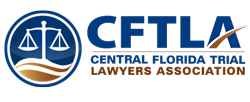Driver Fatigue: Just As Dangerous As Drinking
When we think of the risks associated with driving, we tend to think of speeding, driving under the influence, or distracted driving. Drowsy driving doesn’t sound that bad, but statistics show that it certainly is. For most of us, our days are long and stressful, full of work pressures, family responsibilities, and long commutes. How do we cope? We sleep less, and suffer from chronic sleep deprivation.
Many people are not getting enough sleep. According to a study conducted by the AAA Foundation for Traffic Safety, drivers who got only five or six hours’ sleep in the prior 24 hours were just as dangerous as a driver with a blood-alcohol level of 0.08 percent, which means someone who would be legally considered driving under the influence. Individuals who got seven or more hours of sleep cut their probability of a drowsy driving car crash in half.
The National Highway Traffic Safety Administration estimates that each year, 100,000 are caused by driver fatigue. This results in an estimated 1,550 deaths, 71,000 injuries. In one recent year, 3,997 drowsy driving crashes took place in Florida.
According to the National Sleep Foundation, about 20 percent of drivers admit to falling asleep behind the wheel at some point in the past year. More than 40 percent admitted this has happened at least once in their driving careers.
Why are there so many drowsy drivers?
Many people struggle with driver fatigue. Ideally, healthy adults should sleep seven or more hours each night. Less than seven hours of sleep daily is considered insufficient. However, more than a third of adults do not get enough sleep.
According to data, almost 35 percent of Florida drivers stated that they typically slept less than seven hours a night. The National Highway Traffic Safety Administration (NHTSA) reports that people between the ages of 18 and 29 are at high risk for drowsy driving. Men are more likely than women to drive fatigued. People with children have a higher risk, as well as shift workers.
People are fatigued for many reasons, such as:
- Everyone has a circadian rhythm cycle, or a sleep/wake cycle. Generally, the drive to sleep is greatest during the mid-afternoon and at night. Shift workers or those working long hours are susceptible to driving fatigued.
- Due to employer demands and financial pressures, people are working more and longer hours, as well as being constantly available for electronic updates. People often work more than one job or extended shifts, just to pay their bills. Rest is a luxury they can’t afford.
- About 15 percent of heavy truck crashes involve fatigue. Despite strict regulations regarding rest breaks, long-haul drivers are often pressured to drive without breaks and enter false information in the log.
- Alcohol consumption can cause drowsiness. Certain medications, both prescription and non-prescriptions, cause sleepiness and may also increase the degree of sleepiness stemming from any other cause.
- Sleep disorders also contribute to sleep deprivation. Often, people are not even aware that they suffer from disorders such as restless legs syndrome, sleep apnea, or narcolepsy. These disorders disrupt normal sleep and cause extreme daytime sleepiness. Drowsy driving is more prevalent (41 percent) among people who report a sleep problem.
- Sometimes people experience micro-sleep. This strange, but common, phenomenon is an involuntary episode of unconsciousness. It is momentary, but can last up to 15 seconds. This may sound relatively harmless, but at highway speeds, during the 4 or 5 seconds a driver is in micro-sleep, the vehicle can travel the length of a football field.
How Does Fatigue Affect Our Driving?
Insufficient sleep affects cognitive abilities, including driving skills. It may lead to risks such as:
- Slow reaction times
- Poor attention and concentration
- Bad judgment when reacting to road or traffic conditions
- Inability to maintain a consistent speed, i.e. speeding up and slowing down even when there’s no change in speed limit and no traffic ahead
- Slowed or decreased motor skills
- Blurry vision
- Agitation or impatience with other drivers
- Intensified effects caused by medication
- Drifting across lanes
- Rolling stops
Legal Liability for Driver Fatigue
It is difficult to assess the number of accidents caused by driver fatigue, but experts agree that driver fatigue incidents are probably underestimated. Crash investigators search for indications that drowsiness contributed to a crash, but these clues are not always obvious or decisive. The National Highway Traffic Safety Administration (NHTSA) searches for data in police and hospital reports to identify drowsy driving accidents.
There is currently no specific charge for driver fatigue.
Drowsy driving can be considered negligence if the driver was sleep-deprived and was aware that he or she was drowsy before getting behind the wheel. All drivers have a duty to drive carefully and responsibly. Like other types of risky driving, drowsy driving can be considered a breach of that duty of care.
Negligence is the basis for many personal injury lawsuits, including car accidents. Essentially, negligence is a failure to use reasonable care. Reasonable care is simply defined as the way a prudent person would act in the same or a similar situation.
Four elements constitute a negligence claim. They are:
- The defendant owed the plaintiff a duty;
- The defendant breached this duty owed to the plaintiff;
- The plaintiff was injured as a result; and
- The plaintiff incurred quantifiable damages.
If a driver was negligent because of fatigue or other causes, they may be liable and you may be eligible for compensation for your injuries.
Common Accident Injuries
Drowsy drivers can cause injuries, including lifelong disability and even death. Victims of crashes suffer injuries such as:
- Injuries to the back and neck, including whiplash
- Spinal injuries may leave the victim paralyzed
- Injuries to the head and brain, including concussions or other traumatic brain injuries
- Burn injuries—serious burns may require skin grafts and result in permanent scarring.
- Injuries to muscles, tendons or ligaments. These are painful and slow to heal.
- Broken bones
Compensation From a Driver Fatigue Accident
For minor injuries suffered in car accidents, Florida drivers typically rely on their own Personal Injury Protection (PIP) insurance. However, under Florida law, accident victims may seek compensation from the at-fault driver if their medical bills amount to more than $10,000 or if their injuries involve significant loss of bodily function, permanent scarring, or disfigurement.
Damages may include:
- Medical expenses beyond the limits of the PIP coverage
- Lost wages
- Pain and suffering
- Mental anguish and emotional trauma
- Lost future earning capacity
- Loss of enjoyment of life.
How Do You Prove Driver Fatigue in a Motor Vehicle Accident Case?
When reporting an accident, drivers usually do not tell the authorities that they were very tired or fell asleep at the wheel. Therefore, driver fatigue may be a factor in many accidents, but is not reported.
Drowsy driving is often compared to cases in which drivers were impaired by alcohol. Alcohol use can be determined using blood or breath tests. However, there are no measurable tests to determine someone’s level of sleepiness. Was the driver too tired to be driving? It is difficult to tell. Therefore, proving driver fatigue is difficult.
Drowsy driving cases are very fact-intensive. Evidence from work records and testimony or depositions from witnesses may yield evidence that will establish a case for driver fatigue.
Accident reports are full of valuable information. The type of accident and the scene of the accident may furnish clues to what caused the crash. The driver’s cell phone records or other technical devices may demonstrate how far and how long he or she was driving. Work and school records also paint a picture of the driver’s activities before the crash. Credit or debit card receipts might reveal whether food or drink consumed before the accident could have made the driver drowsy. Medical records may supply information about medications that cause drowsiness. Some people need more sleep than others. Some well-rested people simply doze off because they are bored.
Studies of drowsy driving accidents reveal some common characteristics such as:
- The accident happens late at night or during the early morning or midafternoon.
- The accident involves a single vehicle leaving the roadway.
- The driver is alone in the vehicle.
- The driver does not try to avoid a crash.
- There are no skid marks.
- The crash occurs on a high-speed road.
- The crash is likely to be serious.
Warning Signs of Fatigue
There are many warning signs we should be aware of before we begin to drive, or allow someone who we know is fatigued to get behind the wheel. Common signs of fatigue include:
- Excessive yawning or fidgeting
- Inability to recall last couple miles
- Suddenly realizing you have no idea how you came to be at this location
- Difficulty concentrating
- Difficulty adjusting to sudden changes in the road, such as construction
- Difficulty carrying on a conversation
- Drifting across the road
- Heavy eyelids or frequent blinking
- Missing traffic signs, exits, or signals
Interventions for Drowsy Driving
The National Safety Council recommends interventions to help prevent drowsy driving. Some of these interventions focus on those under age 25, who make up an estimated 50 percent or more of drowsy driving crashes. For example, parents should make drowsy driving a part of all discussions and rules involving young drivers. College students are known for their sleep deprivation, therefore, education programs for college students may reduce drowsy driving and instill better habits for the future.
For people of all ages, safety and health programs in the workplace can educate workers on the importance of getting enough sleep. Also, according to Consumer Reports, the side effects warnings found on medications are sometimes unclear. Drivers may not understand the importance of restricting their driving after taking certain medications.
Developing crash avoidance technologies, such as lane departure warnings or a drowsiness alert, can detect drowsy driving patterns and warn drivers.
Prevention Tips
To help raise awareness of driver fatigue, Florida passed the Ronshay Dugans Act. Ronshay Dugans was an eight-year-old third-grade child who died from brain injuries when a cement truck hit her school bus. The trucker driver was allegedly drowsy and driving recklessly at the time of the collision. It is important to remember that tragedies like this are often preventable.
People are usually aware that they are tired and they engage in all kinds of strategies to try and stay awake. They change the settings on the air conditioner or open the windows. They eat candy or chew gum. They blast music and sing. Tactics such as these don’t really work, because the real problem is fatigue.
The best ways to prevent driver fatigue include:
- Don’t drive between midnight and 4 a.m.
- Make sure you’re well-rested before you start driving
- Eat light meals
- Don’t drink alcohol
- Learn to recognize the first signs of fatigue
The Florida Department of Motor Vehicles provides additional safety tips to help reduce the chance of driving while drowsy, which include the following:
- Make sure you are well-rested before setting out. For most people that would mean at least 7 hours of sleep, but it varies for each person.
- Do not drive at a time when you normally would be sleeping.
- If possible, change drivers frequently.
- If you have far to go, stop and take a rest every two hours or so.
- Allow plenty of time to reach your destination. Don’t forget to plan for rest breaks.
- Caffeinated drinks may help keep you awake, but not necessarily more alert.
- Know the side-effects of your medications, particularly new medications, and avoid driving if you are on any prescription drugs that could make you drowsy.
- People who change time zones frequently, such as pilots, flight crews, and business travelers should be aware of potential jet lag and avoid driving until they are rested.
Drowsy driving is a perilous combination of driving and sleepiness or fatigue. It is dangerous for the driver, his or her passengers and everyone else on the road. Most of these accidents happen when the driver has not had enough sleep. However, other factors, such as medications, stress, or untreated sleep disorders may play a role in driver fatigue. If you have questions about an accident involving a fatigued driver, an experienced car accident attorney can explain your legal options.






